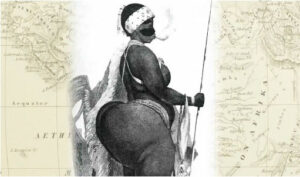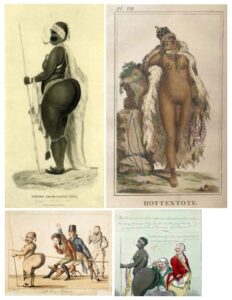|
Getting your Trinity Audio player ready...
|
The forgotten tale of Sarah Baartman “Hottentot Venus”
Origins in Southern Africa:
Saartjie Baartman, born to a Khoisan family in South Africa’s Gamtoos River area, faced early tragedy as an orphan due to a commando raid. Enslaved by Dutch farmer Peter Cezar, her life took a drastic turn when she was taken to London in 1810 by Scottish doctor Alexander Dunlop.
Saartjie “Sarah” Baartman (before 1790 – 29 December 1815) (also spelled Bartman, Bartmann, Baartmen) was the most famous of at least two Khoikhoi women who were exhibited as freak show attractions in 19th-century Europe under the name Hottentot Venus—”Hottentot” as the then-current name for the Khoi people, now considered an offensive term, and “Venus” in reference to the Roman goddess of love.
The Hottentot Venus may be famous but Sarah Baartman is far less so. There is no attempt to learn anything about the main figure behind the icon.
In this brief overview, Neptune Prime provides a concise summary of Sarah Baartman’s historical journey.
Exhibition in Great Britain:
In London, Baartman’s exhibition showcased her “exotic” features, including steatopygia and elongated labia. This sparked a scandal, leading to a court case initiated by the African Association, but Baartman claimed agency over her actions. Despite controversy, her popularity grew, and she toured Britain and Ireland.
READ ALSO: Tale Behind Michael Jacksons Billie Jean: A masterpiece of artistic genius
French Exploitation and Scientific Intrigue:
Sold to a Frenchman, Baartman faced more exploitation in France, exhibited under pressured conditions. French naturalists, including Georges Cuvier, examined her, perpetuating stereotypes about her physique. Baartman’s life in Paris was marked by poverty and, allegedly, heavy drinking and prostitution.

Perpetuating Racism:
Baartman’s unique physical features were used to reinforce racist beliefs. Her body was likened to that of the “Negro race” and even the highest race of monkeys, the orangutan. Racism in the 19th century justified her exploitation as a spectacle, reinforcing harmful stereotypes.

Scientific Sexism:
Cuvier’s dissection of Baartman contributed to shaping European science during a period of insecurity about race and gender. Baartman, along with other African women, was dissected, reinforcing the dehumanization of foreign women based on racial biases.
Death and Legacy:
Baartman died in 1815 under mysterious circumstances, possibly due to smallpox or other ailments. Cuvier’s autopsy perpetuated the idea of her as an “ape-like” creature. Her remains, including her skeleton, genitals, and brain, were displayed in Paris’ Musée de l’Homme until 1974.
Display of Remains:
Baartman’s remains were exhibited until the 1970s, emphasizing her steatopygia. Feminist objections led to the removal of her skeleton in 1974 and body cast in 1976.
The Journey Home:
Calls for repatriation began in the 1940s, gaining momentum after a poem in 1978 and Stephen Jay Gould’s book in the 1980s. After legal debates, France returned her remains to South Africa in 2002. She was buried in the Gamtoos Valley, becoming an icon in South Africa’s history.
Legacy and Activism:
Saartjie Baartman remains a symbol of Western exploitation and racism. Initiatives like the Saartjie Baartman Centre for Women and Children and South Africa’s environmental protection vessel, the Sarah Baartman, honor her memory.
Follow the Neptune Prime channel on WhatsApp: https://whatsapp.com/channel/0029Va74ZvU2v1IqKByXoX3d
Do you have breaking news, interview request, opinion, suggestion, or want your event covered? Email us at neptuneprime2233@gmail.com

